Regarding food safety and maintaining the freshness of our favorite dishes, “How long can meat sit out?” is a question that often perplexes both experienced chefs and novice cooks alike. There’s no denying the importance of this query, as it can mean the difference between enjoying a delicious, well-prepared meal and becoming a victim of dreaded foodborne illnesses. Whether you’re handling raw or cooked meat, understanding the proper guidelines for storing and preparing these protein-rich staples is critical for maintaining their taste and ensuring the health and well-being of ourselves and our loved ones.
In this article, we will dive into the factors determining how long meat can safely sit out at room temperature and helpful tips and tricks for preventing spoilage and bacteria growth. Equip yourself with this essential knowledge, and you’ll be well on your way toward confidently mastering your culinary creations.
What Temperature Range Is Considered Safe For Meat That Has Been Left Out?
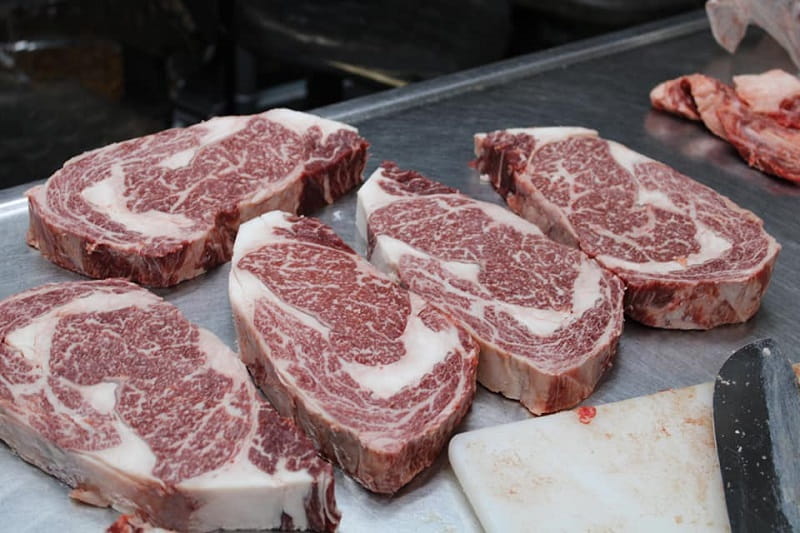
It’s important always to ensure that food is stored at a safe temperature to avoid any potential risks of foodborne illnesses. For meat, the safe temperature range is between 40 to 140 °F, also known as the “Danger Zone,” where bacteria like salmonella can multiply the fastest.
If left out at room temperature, meat should only be left for a maximum of two hours or one hour if the temperature is above 90 °F. It’s best to store meat in a refrigerator that is 40°F or cooler or a freezer that is 0°F or cooler.
How Long Can Meat Sit Out?
Factual suggests that perishable foods like meat should not be left out at room temperature for more than two hours, with the maximum time being four hours. This applies to all raw and cooked meat types, regardless of the cut or preparation method. The time limit is reduced to one hour if the temperature is above 90 degrees Fahrenheit.
It’s essential to remember that bacteria can start growing rapidly in raw meat within just 20 minutes at room temperature, so it’s better to err on the side of caution.
How Long Can Raw Meat Sit Out
When it comes to raw meat should not sit out at room temperature for more than two hours. This is because bacteria can grow rapidly in raw meat within just 20 minutes at room temperature. If the temperature is above 90°F, raw meat can only be left out for one hour. Raw meat is no longer safe if left out for more than two hours.
Ground beef is particularly vulnerable, and harmful bacteria can multiply quickly if left out of the fridge for longer than two hours or one hour above 90°F. Remember, the two-hour rule applies to all raw meats, so it’s important to be vigilant and ensure that raw meat is handled and stored properly to avoid any risk of foodborne illness.
How Long Can Meat Sit Out After Cooked?
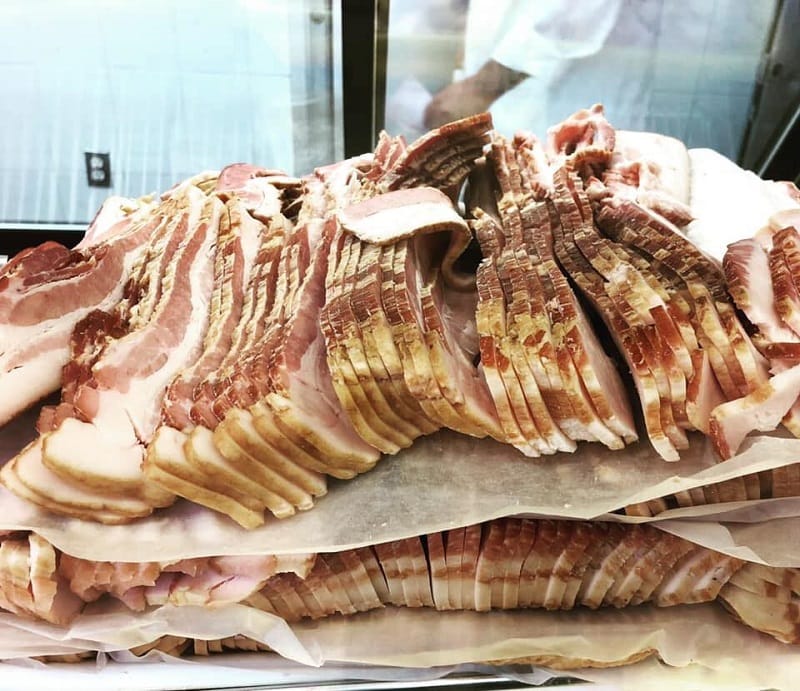
If you’ve ever wondered how long cooked meat can sit out before it goes bad, the answer is a maximum of two hours. However, one hour is the maximum if the surrounding temperature is above 90 degrees Fahrenheit.
Keeping perishable foods at a safe temperature is crucial to avoid food poisoning caused by bacteria growth. The United States Department of Agriculture recommends not leaving cooked or uncooked meat out for more than two hours. If the meat has been left out overnight, bacteria growth could make it unsafe to consume. So, enjoy your delicious cooked meat, and remember to refrigerate it within the recommended time frame to keep it safe for later consumption.
Read more:
- How Long Can Frozen Chicken Sit Out
- How Long Can Cooked Steak Sit Out
- How Long Is Cooked Pork Good In The Fridge
How Long Can Frozen Meat Sit Out?
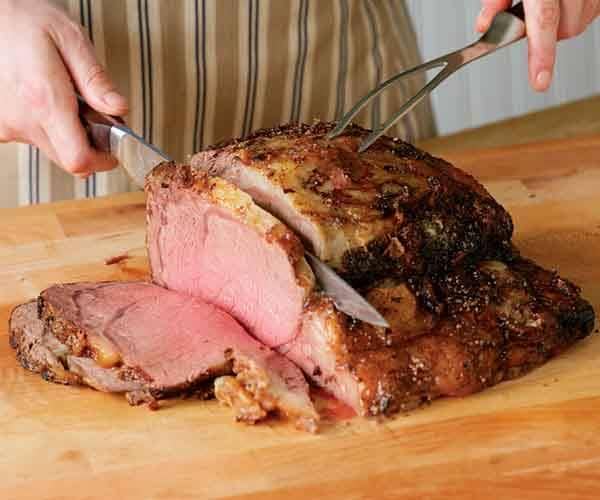
According to the United States Department of Agriculture (USDA), frozen meat can typically be left out for up to two hours if the temperature is below 90°F (32.2°C). However, it’s recommended not to let the meat sit out for more than an hour during hot summer; after two hours at room temperature, harmful bacteria that can cause foodborne illnesses start to grow.
If the frozen meat has been sitting out for more than four hours, it could have produced heat-stable toxins that cooking can’t destroy. Therefore, it’s best to thaw frozen meat in the refrigerator or using cold water and not leave it out for an extended period.
How Long Can Meat Sit Out To Thaw?
According to the USDA, meat should never be thawed at room temperature but instead in the refrigerator, microwave, or cold water. Using the refrigerator method, it can take up to 24 hours for a large cut of meat, like a roast, to fully thaw. Ground beef or smaller cuts of meat can take 1-2 days in the refrigerator.
If using the cold water method involves placing the meat in a sealed plastic bag and submerging it in cold water, it can take anywhere from 30 minutes to a few hours, depending on the size and type of meat. It’s important always to follow proper thawing methods to ensure the safety of the meat and those consuming it.
How Long Can Meat Sit Out At Room Temperature?
It’s important to keep meat at a safe temperature to avoid the growth of harmful bacteria. According to the USDA, raw meat should not be left at room temperature for more than two hours. If the temperature is above 90°F, that time is reduced to one hour. This rule applies to all raw meats, including beef, poultry, and fish.
Cooked meat can also be left out for up to two hours, but it’s best to store it in the refrigerator within one hour to ensure its freshness and safety. Remember, once the meat has been left out for too long, it may not be safe to consume, so it’s always better to be safe than sorry.
How Long Can Meat Sit Out In Car?
Did you know leaving meat in a warm car is not the best idea? According to the United States Department of Agriculture, meat can sit in a car for a maximum of two hours, even at room temperature. However, they advise that raw meat should never be left outside the fridge or freezer for more than two hours.
The Food and Drug Administration also has a general rule that food must be discarded after four hours if it is left without temperature controls. So, before the four-hour mark, keeping the meat in a cool and safe place like a cooler, especially during hot weather is always best. It’s important to keep perishable food, including meat, at a safe temperature to avoid potential foodborne illnesses. Always keep an eye on the temperature and try to refrigerate or freeze your meat as soon as possible to avoid any risk.
How Long Can Meat Sit Out At 50 Degrees?
At 50 degrees Fahrenheit, meat can be stored for up to four days before it starts to lose its quality. It’s important to note that this period can vary depending on the type of meat and how it’s been prepared.
Can Cooked Meat Sit Out At Room Temperature For The Same Amount Of Time As Raw Meat?
It can be tempting to leave cooked meat at room temperature for a while, but it’s important to be cautious about food safety. According to the Food and Drug Administration (FDA), raw and cooked meat should not be left at room temperature for more than two hours. Bacteria can grow quickly on cooked meat left out, just as on raw meat.
Therefore, it’s important to store all meat properly and not take any chances. The two-hour rule applies whether it’s a rare steak or a fully cooked roast. So enjoy that delicious meal, but make sure to promptly put any leftovers in the fridge.
What Is The Two-Hour Rule, And Why Is It Important For Meat Safety?
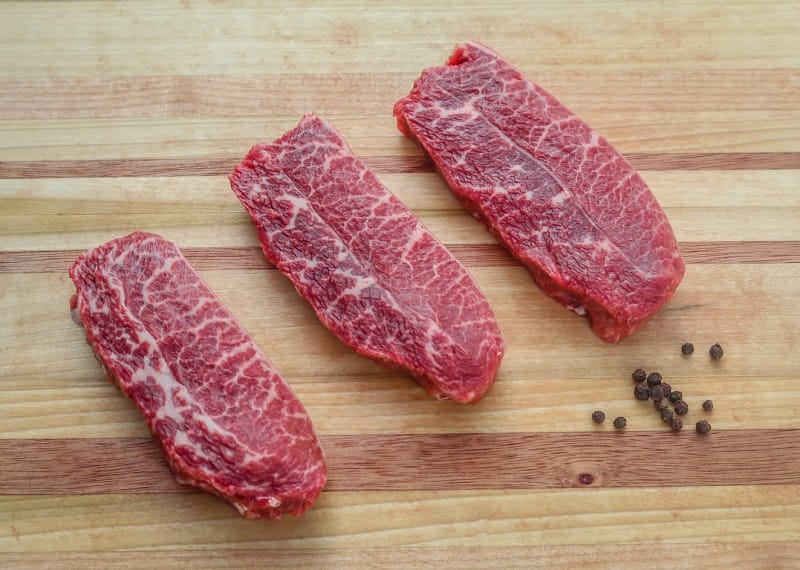
As someone who loves to cook, I always look for ways to ensure that the food I prepare is safe. One rule that I have found to be particularly useful when it comes to meat safety is the two-hour rule. Today, I will explain the two-hour rule, why it is important for meat safety, and how you can implement it in your kitchen.
The two-hour rule is a food safety guideline that recommends that perishable foods, including meat, should not be left at room temperature for more than two hours. This is because bacteria can grow rapidly on food left at room temperature and can cause foodborne illnesses.
Regarding meat, the two-hour rule is particularly important because it is a high-risk food for bacterial growth. Meat is rich in protein, which provides an ideal environment for bacteria to grow. Additionally, if meat is not stored properly or cooked to the right temperature, it can harbor harmful bacteria like Salmonella, E. coli, and Listeria, which can cause serious illnesses.
Implementing the two-hour rule in your kitchen is easy. When you purchase meat, refrigerate it as soon as possible. If you are not going to cook the meat within two days, freeze it. When you are ready to cook the meat, thaw it in the refrigerator, not on the counter. Once the meat is thawed, cook it to the right temperature to kill harmful bacteria. And, of course, once the meat is cooked, do not leave it at room temperature for more than two hours.
How Can The Maximum Time Meat Sit Out Vary Based On The Temperature And Humidity Of The Environment?
First, it’s important to know that meat should never be left out at room temperature for more than 2 hours. This is because bacteria can grow rapidly in meat that is not stored properly and can cause food poisoning.
Now, let’s talk about how the temperature and humidity of the environment can affect the maximum time meat can sit out. If the temperature is between 40°F and 140°F, known as the “danger zone,” bacteria can grow rapidly in meat. In this case, meat should not be left out for more than 1 hour.
On the other hand, if the temperature is below 40°F, which is the temperature of a typical refrigerator, meat can be left out for up to 2 hours before it becomes unsafe to eat. However, if the temperature is above 90°F, common during summer, meat should not be left out for more than 1 hour.
Humidity can also play a role in how long meat can sit out. If the humidity is high, bacteria can grow more easily on the surface of the meat. In this case, meat should not be left out for more than 1 hour, regardless of the temperature.
It’s important to note that these guidelines apply to all types of meat, including beef, pork, chicken, and fish. If the meat has been left out for too long, it’s better to be safe than sorry and throw it away.
What Are The FDA Recommendations For Handling And Storing Meat Safely?
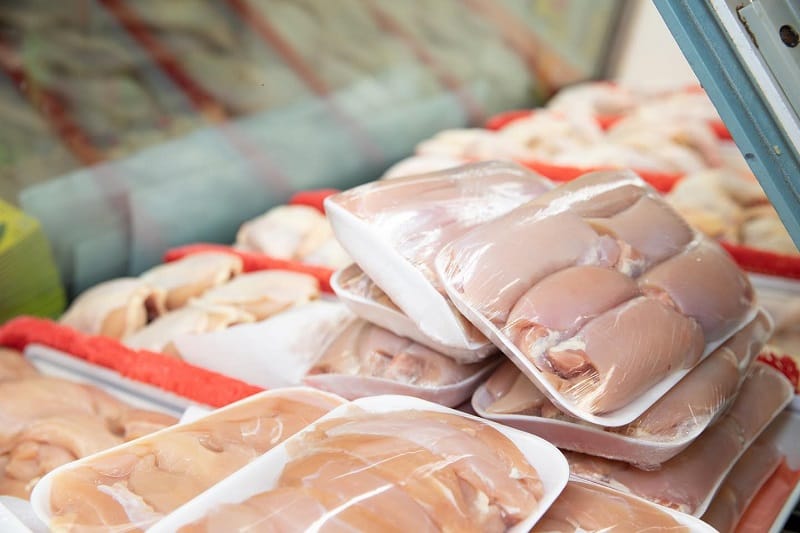
I have always been concerned about the safety and quality of the meat I consume. That’s why I decided to research the subject and came across the FDA’s guidelines for handling and storing meat safely. I will share what I’ve learned and how you can ensure that the meat you buy is safe for consumption.
Firstly, it’s important to know that the FDA recommends purchasing meat from a reputable source, such as a grocery store or a butcher. Look for meat labeled with the USDA inspection stamp, meaning it has been inspected for safety and quality.
Once you’ve purchased your meat, it’s crucial to handle it properly to prevent the growth of harmful bacteria. The FDA recommends keeping meat refrigerated at a temperature of 40°F or below. This will slow the growth of bacteria and help keep your meat fresh. If you’re not planning to use the meat within a few days, you can freeze it for later use. Make sure to wrap the meat tightly in plastic or aluminum foil to prevent freezer burn.
When preparing meat, you should always wash your hands and any surfaces that will come into contact with the meat. This includes cutting boards, utensils, and countertops. Use hot, soapy water to wash these items thoroughly before and after use.
It’s also important to cook your meat to the appropriate temperature to kill any bacteria that may be present. The FDA recommends the following cooking temperatures for meat:
- Beef, pork, lamb, and veal (steaks, roasts, and chops): 145°F with a 3-minute rest time
- Ground meat (beef, pork, lamb, and veal): 160°F
- Poultry (chicken, turkey, duck, and goose): 165°F
- Fish: 145°F or until the flesh is opaque and separates easily with a fork
Finally, when storing leftover meat, the FDA recommends refrigerating it within two hours of cooking. If you’re not planning to eat the leftovers within a few days, you can freeze them later. Make sure to label the container with the date so that you can keep track of how long it’s been in the freezer.
How Can You Tell If Meat Has Gone Bad?
I’ve had my fair share of unpleasant experiences with spoiled meat; trust me, it’s not something you want to experience.
First and foremost, always check the expiration date on the packaging. This is a good indicator of whether or not the meat is still good to eat. If the date has passed, it’s best to toss it out.
Next, use your senses. Look at the meat and check for any discoloration or odd textures. If it’s slimy or has a strange odor, it’s likely gone bad. Trust me; you’ll know if it doesn’t look or smell right.
If you’re still unsure, touch the meat. It should feel firm and not slimy or mushy. If it feels off, it’s best to play it safe and throw it out.
Another important factor to consider is how the meat has been stored. If left out at room temperature for too long, it could grow bacteria and be unsafe to eat. Always store your heart in the fridge or freezer at the appropriate temperature.
When it comes to ground meat, it’s especially important to be cautious. Ground meat has a larger surface area, so it can spoil more quickly. If you’re unsure it’s still good, it’s best to err on caution and toss it out.
What Common Types Of Bacteria Can Grow On Meat And Cause Foodborne Illnesses?
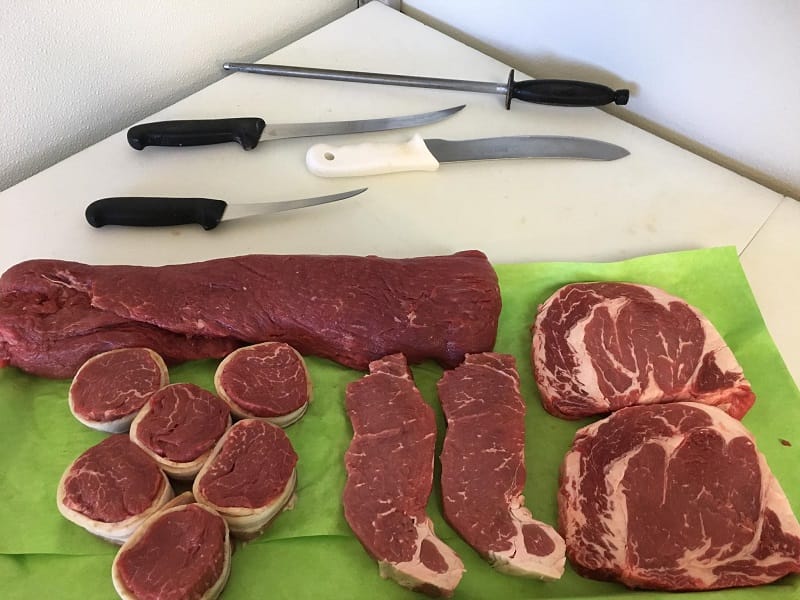
One of the biggest risks when it comes to meat is the growth of bacteria that can cause foodborne illnesses. Today, I want to share some common types of bacteria that can grow on meat and how to prevent them.
- Salmonella: This is commonly found in raw or undercooked poultry, eggs, and meat. Symptoms of salmonella poisoning include diarrhea, fever, and abdominal cramps. To prevent salmonella, cooking meat to the proper temperature (165°F for poultry) and avoiding cross-contamination by using separate cutting boards and utensils for raw meat and other foods is important.
- E. coli: This bacteria is found in the intestines of animals and can cause severe illness in humans. It’s commonly found in ground beef, as the grinding process can spread bacteria throughout the meat. To prevent E. coli, cook ground beef to an internal temperature of 160°F and avoid consuming raw or undercooked beef.
- Listeria: This bacteria can be found in the deli, hot dogs, and other processed meats. It can cause serious illness in pregnant women, the elderly, and those with weakened immune systems. To prevent listeria, properly store and handle deli meats and heat them to an internal temperature of 165°F before consuming.
- Campylobacter: This bacteria is commonly found in raw or undercooked poultry and can cause diarrhea, fever, and abdominal cramps. To prevent campylobacter, cook poultry to an internal temperature of 165°F and avoid cross-contamination by using separate cutting boards and utensils for raw meat and other foods.
- Clostridium perfringens: This bacteria is commonly found in cooked meats left at room temperature for too long. It can cause diarrhea and abdominal pain. To prevent clostridium perfringens, refrigerate cooked meats within two hours of cooking and reheat them to an internal temperature of 165°F before consuming.
In addition to cooking meat to the proper temperature and avoiding cross-contamination, it’s essential to properly store and handle meat to prevent the growth of bacteria. This includes refrigerating or freezing meat promptly, thawing meat in the refrigerator or microwave (not at room temperature), and washing hands and surfaces thoroughly before and after handling meat.
Are Any Health Risks Associated With Consuming Meat That Has Sat Out Too Long?
I’ve always been curious about its safety when left out for too long. There’s no denying that meat is a tasty source of protein, but is it worth risking my health? Here, I’ll share my research on the potential health risks associated with consuming meat that has sat out too long.
Firstly, it’s important to know that any food left at room temperature for more than two hours should be thrown away. This is because bacteria can quickly grow on food not refrigerated, leading to foodborne illnesses. Meat, in particular, can be a breeding ground for bacteria such as Salmonella, E. coli, and Listeria.
If the meat has been left out for more than two hours, it’s best to err on caution and throw it away. Even if it looks and smells fine, it may contain harmful bacteria that can make you sick. The same goes for meat thawed and left out for too long. If you’re unsure whether the meat is still safe to eat, it’s better to be safe than sorry and throw it away.
Another factor to consider is the temperature at which the meat was stored. If the meat was left out in a warm room, it’s more likely to have developed harmful bacteria. On the other hand, if the meat was stored in a cool place, such as a refrigerator or freezer, it’s less likely to have gone wrong.
It’s also important to note that some types of meat are more susceptible to bacterial growth than others. Ground meat, for example, is more likely to contain harmful bacteria than whole cuts of meat. This is because the grinding process can introduce bacteria into the meat.
In conclusion, consuming meat that has sat out too long can pose a risk to your health. To avoid getting sick, following food safety guidelines and throwing away any meat left out for more than two hours is best. While it may be tempting to take a chance and eat it anyway, the potential consequences are not worth it.
How To Properly Store Meat?
Whether you’re a seasoned pro or a beginner in the kitchen, learning how to store meat properly is a crucial part of your culinary education. I’ll share some tips on storing meat properly so you can enjoy it at its best.
- Refrigerate or Freeze Immediately: One of the most important things to remember when storing meat is to refrigerate or freeze it immediately after purchasing. Bacteria can begin to grow at temperatures between 40°F and 140°F, commonly known as the “danger zone.” To avoid this, put your meat in the refrigerator or freezer as soon as possible.
- Store Meat in the Right Containers: Another important aspect of meat storage is using the right containers. When storing meat in the refrigerator, using airtight containers or sealed plastic bags is best to prevent air from entering and causing freezer burn. Freezer burn can lead to losing flavor and quality in the meat. You can use freezer-safe containers, plastic bags, or even vacuum-sealed bags when storing meat in the freezer.
- Label and Date Your Meat: To ensure that you’re not keeping meat in the fridge or freezer for too long, it’s important to label and date your meat. This will help you keep track of when you bought the meat and when it needs to be used or thrown away. If you’re freezing meat, label it with the date it was frozen so you know how long it’s been in the freezer.
- Use the Right Temperature: The right temperature is another key aspect of meat storage. The ideal temperature for storing meat in the refrigerator is between 34°F and 40°F. For the freezer, keeping the temperature at 0°F or below is best. This will help prevent bacteria growth and keep your meat fresh for longer.
- Keep Your Fridge and Freezer Clean: Keeping your fridge and freezer clean is important to prevent cross-contamination. Make sure to clean your fridge and freezer regularly, and don’t store raw meat above-cooked meat or other foods. This will help prevent any bacteria from spreading and keep your food safe.
FAQs
Are Any Types Of Meat More Susceptible To Bacterial Growth Than Others?
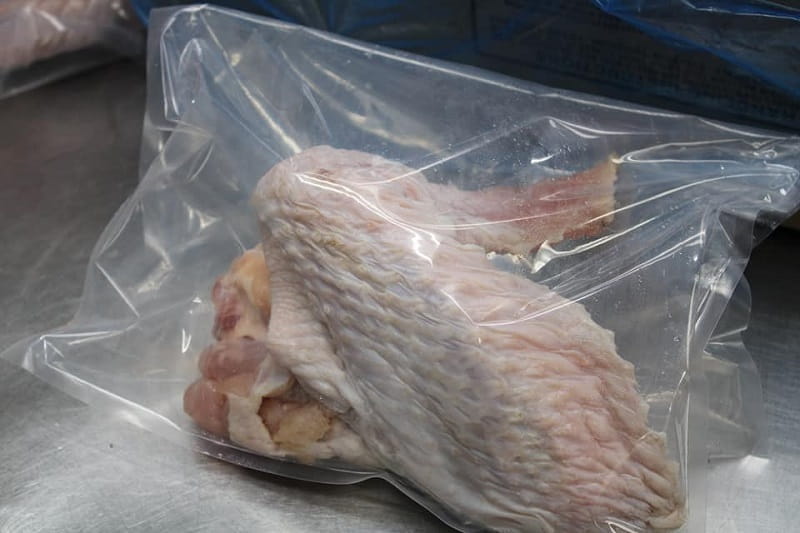
Chicken, duck, and turkey are commonly known to be more at risk of contamination with bacteria like Salmonella and E. coli. According to a study, meat-poultry commodities like beef, pork, lamb, and game meats can also support the growth of pathogens. Food poisoning bacteria can grow and multiply more quickly on some types of food, like raw and cooked meat.
Fresh meat is also a highly nutritious substrate with a water activity level that enables the growth of most microorganisms. Therefore, it is essential to cook all meats properly to kill any harmful bacteria present.
Is It Safe To Eat Meat That Has Been Left Out Overnight?
According to the USDA, leaving cooked meat out for more than two hours can lead to bacterial growth and food poisoning. This poses a serious health risk, potentially leading to hospitalization and death. Keeping cooked meat refrigerated or frozen is recommended to prevent bacterial growth. While reheating food may seem like a quick fix, it may not make it safe. It’s always better to err on the side of caution and avoid eating meat left out overnight or for extended periods.
Is It Safe When Raw Steak Left Out For 12 Hours?
Leaving raw steak out for extended periods of time can be risky, as harmful bacteria can start growing rapidly in just 20 minutes at room temperature. Raw meat should not be left out for more than two hours, and if temperatures are above 90°F, this time is reduced to just one hour. However, if left out for 12 hours, it’s advisable to discard the steak as the risk of contamination is high.
Although it may look safe to cook, bacteria can still be present even after cooking, leading to foodborne illnesses for those who consume it. Therefore, it’s always best to observe food safety guidelines and avoid leaving raw meat out for prolonged periods to protect yourself and others from potential health risks.
Is It Safe When Raw Steak Left Out For 4 Hours?
It is safe to leave raw meat out at room temperature for only two hours. However, some people may take the risk and let their meat sit longer so it can come up to room temperature or absorb the flavors from the seasoning. It’s essential to remember that cooking raw meat to the right temperature could kill any bacteria present, but it is not recommended to consume meat left out for too long.
Food safety experts suggest discarding meat left out for over two hours or one hour if the room temperature is above 90 degrees Fahrenheit. However, it’s always better to be safe than sorry, so following the USDA’s guidelines is best to avoid potential risks.
Is It Safe When Raw Meat Left Out For 8 Hours?
Leaving raw meat out at room temperature for an extended period is not recommended as it can pose a risk to one’s health. Bacteria multiply rapidly in raw meat within twenty minutes of being kept at room temperature. Therefore, leaving it out for eight hours can lead to bacterial growth, ultimately causing foodborne illnesses.
It is best to refrigerate or freeze raw meat to avoid this risk. While it may be tempting to leave the meat out to defrost, it is not worth the potential health concerns that come with it. So, it’s always better to be safe than sorry and follow guidelines to prevent food-related health issues.
Is It Safe When Raw Meat Left Out For 6 Hours?
It is unsafe to leave raw meat out for six hours, as bacteria can quickly multiply in the meat within the first two hours at room temperature. This can cause foodborne illnesses if consumed. It is generally recommended not to leave raw meat out for longer than two hours if the surrounding temperature is above 40°F.
Moreover, if the temperature is above 90°F, leaving it out for more than an hour is not advisable. Even if it smells and looks fresh, eating may be harmful. Therefore, storing raw meat in a refrigerator set to 40°F or below is best to keep it cold and safe to eat. If someone accidentally leaves raw meat out for six hours or overnight, it is better to throw it out than risk food poisoning.
What Are Some Tips For Consuming Meat Safely When Camping Or Traveling Without Refrigeration?
Some tips for consuming meat safely when camping or traveling without refrigeration include packing perishable foods directly from the refrigerator or freezer into a cooler, double-bagging any raw meat to prevent leaks onto other foods, and freezing meats ahead of time. It’s also helpful to bring disposable wipes, hand sanitizer, or biodegradable soap for handwashing and to cut meat before the trip.
Additionally, cured meats like summer sausage, pepperoni, or salami are safe camping without a fridge, and canned chicken or tuna can be a good alternative to fresh meats.
Conclusion
In conclusion, paying attention to how long meat sits out at room temperature is crucial. The two-hour rule is a general guideline that should be followed to prevent foodborne illness. Remember to keep cooked meat at a temperature of 140°F or higher; if in doubt, throw it out. We can enjoy delicious and safe meals by being mindful of food safety.
Do you have any questions about how long can meat sit out? Let us know in the comments below.
References:
- https://www.cdc.gov/foodsafety/foods-linked-illness.html
- https://ask.usda.gov/s/article/Is-food-safe-if-left-out-overnight
- https://www.betterhealth.vic.gov.au/health/healthyliving/food-safety-outdoors

Hey readers! Chip Holland here, and I’m a Manager of this website. My passion for writing about it only matches my passion for BBQ. Follow my blog for mouth-watering recipes, tips, and tricks for the perfect smoke, grill, and BBQ. I’m sure you won’t be disappointed!
